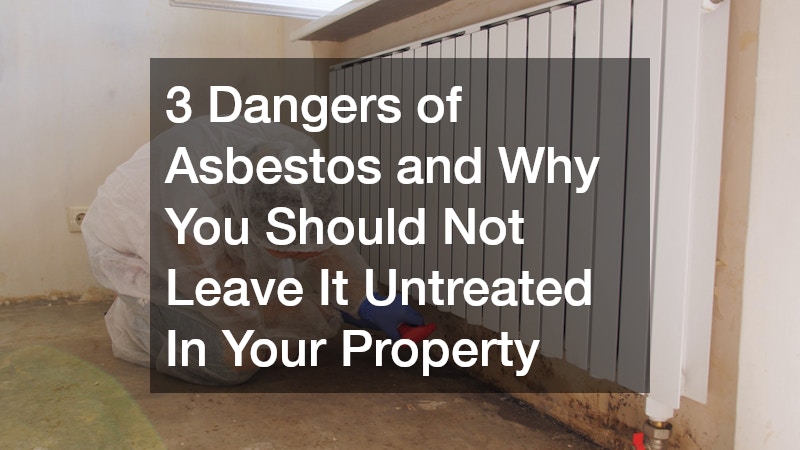Many older Australian homes and buildings still contain asbestos — a material once hailed for its fire resistance and insulation properties. However, what was once considered a construction breakthrough is now widely recognised as a serious health hazard.
It poses significant risks when left untreated or disturbed, especially in residential and commercial properties where unsuspecting occupants may face long-term exposure.
Despite the material being banned in Australia since 2003, countless homes, schools and workplaces built before the 1990s still contain it in some form. From roofing and walls to insulation and floor tiles, its presence remains a silent threat. Leaving it untreated, whether due to unawareness or delay, exposes property owners and their families to irreversible harm. Understanding the dangers of it and taking timely action can help prevent serious health consequences, costly property damage and legal complications.
1. It Can Lead to Life-Threatening Illnesses
The most well-known and alarming risk of its exposure is its link to fatal diseases. Its fibres are extremely fine and can become airborne when disturbed. Once inhaled, they embed in the lungs and remain there for decades, slowly damaging tissue and triggering illness. Long-term exposure can lead to diseases such as asbestosis, lung cancer and mesothelioma — a rare and aggressive cancer found in the lining of the lungs or abdomen.
Unlike many other health issues, asbestos-related diseases have long latency periods. Symptoms may not appear for 20 to 30 years after the initial exposure, by which time the damage is often irreversible. Asbestosis causes scarring of lung tissue, which leads to breathing difficulties and reduced lung function. Mesothelioma, almost exclusively caused by its exposure, is usually diagnosed at an advanced stage and has a very low survival rate.
No amount of exposure to it is considered safe. Even minimal contact can have serious health implications, especially if repeated over time. If there is any suspicion that your property contains toxic material, it is vital to have it assessed by qualified professionals immediately rather than waiting until visible damage or health issues occur.
2. It Degrades Over Time and Becomes More Dangerous
While asbestos-containing materials may seem stable when first installed, they become increasingly fragile with age. In many older Australian homes, these materials are now well past their expected lifespan. As time passes, weather, water damage, renovations or even minor vibrations can cause the fibres to break down and release into the air.
A common misconception is that if it is not visibly damaged, it poses no risk. However, even undisturbed it can become a hidden threat once it begins to deteriorate. Roof sheeting, pipe lagging and ceiling insulation are particularly vulnerable to long-term degradation. Once these materials begin to crumble or become friable, they release airborne particles that are easily inhaled by anyone in the vicinity.
The danger lies in the fact that you may not notice the issue until it is too late. Many property owners unknowingly expose their families, tenants or employees to it over extended periods simply because they do not realise that the materials around them have started to break down. This highlights the importance of conducting professional inspections, especially before undertaking any renovations or structural changes in older buildings.
3. Leaving It Untreated Can Affect Property Value and Legal Compliance
Ignoring or postponing the treatment of it not only risks health but can also damage your property’s value and legal standing. It found on-site during a building inspection can immediately deter potential buyers or tenants. Even if your property is structurally sound, its perceived safety risks can reduce its marketability, force down offers or require costly remediation before a sale can proceed.
For landlords and business owners, the risks extend beyond financial loss. There are strict legal requirements in Australia concerning the management and disclosure of it. Failure to meet these obligations can result in hefty penalties and even civil litigation. Property owners have a duty of care to protect the health of occupants, contractors and visitors. This means being proactive about its management, including regular assessments, risk documentation and — where needed — removal by licensed professionals.
Taking Action Is the Only Safe Option
There is no safe way to ignore it. Whether you are a homeowner, investor or landlord, your property may be hiding a serious threat. Taking prompt action not only protects your health and the wellbeing of others but also secures the value and compliance of your asset.
It should never be left untreated. Its presence is not something you can afford to ignore. The risks to health, property value and legal safety are simply too great. By taking informed, proactive steps, you can ensure a safer environment and peace of mind for years to come.
.





